Rotokare Scenic Reserve, near Eltham in South Taranaki is a stunning reserve of mature native bush, wetlands and a 17.8hectare natural lake that was first gazetted as a reserve in the late 19th Century. But by the beginning of the 21st Century the area was in visible decline and that in turn, influenced some people’s attitude towards it.
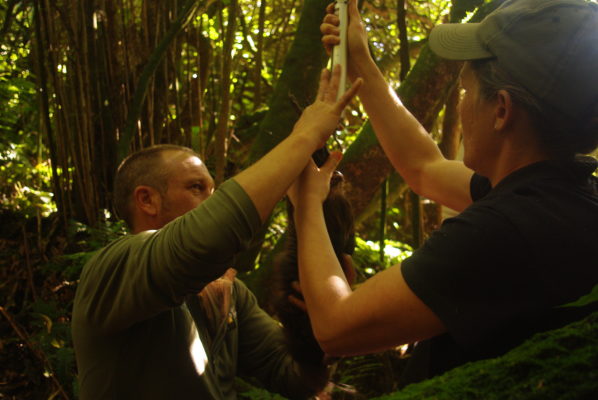
“The forest was very open due to possum browse. There was very little understory,” says Sanctuary Manager, Simon Collins. “And it was poorly treated by a section of the community. Cars were being trashed there.”
The Rotokare Scenic Reserve Trust was formed in 2004 out of concern for the reserve’s declining state and as the community began to care for the area, attitudes towards it also began to change. For those hardened hoons who continued to abuse their access to the reserve, the practically-minded rural community had a simple solution. They parked a tractor across their access route.
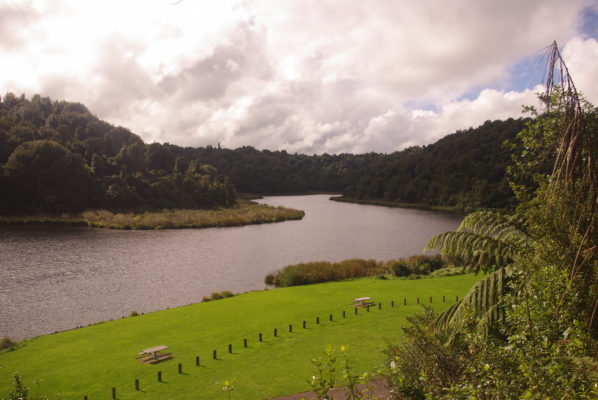
The reserve has always been open to everyone and is used for a variety of recreation activities. That 24/7 access continues today, even though Rotokare is now a fenced sanctuary.
“The lake is used for recreation, for powerboats and water-skiing,” says Simon. “Rotokare is a place where locals go for a run. That’s an important part of what the site is. The sanctuary project is fully inclusive.”
Although the reserve is now enclosed by an 8.2km pest-proof fence, the original aims of the Trust were much more modest.
“Initially it was thought that raising $30,000 for possum eradication would be a significant achievement for a local rural project,” says Simon, “From there it was a really rapid journey. Within 4 years, the $2m fence was funded and built. The beginning was very rural/grassroots. There was a really passionate community but no-one was an ecological restoration expert. We’re very conscious of ‘learning as we go’ and there’s an absolute commitment to achievement through organic growth.”
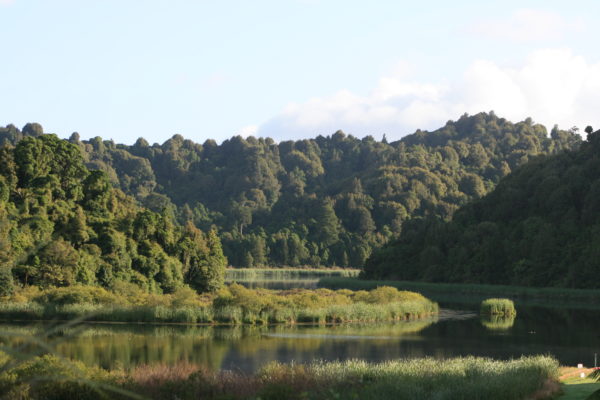
The pest-proof fence has been constructed along the ridgelines surrounding the reserve. That location helps reduce the likelihood of a falling tree breaching the pest-proof security.
“Trees don’t usually fall up hill,” says Simon. “We also have a very sound fence with water gates etc. There are 500 kill traps inside the sanctuary and routine tunnel audits. We’ve experienced rodent incursions, but our pest history is good. All sanctuaries end up with an incursion at some point.”
The Trust has been ‘purposefully pragmatic’ about pest eradication.
“We spent several years learning how to manage ‘pest-free’ before reintroducing any native species,” says Simon. “There has to be sustainability for the project to be truly successful. It was important not to do too much too fast and have burn out. When that happens, you lose your most important asset – people.
The sanctuary’s ‘pest history’ since 2008 consists of 2 stoats, 13 rats and periodic mice incursions.
“We’re completely committed to zero mouse densities,” says Simon. “It’s our focus and goal. We believe we’ve probably eradicated mice several times, although we can’t prove it. We work hard to be mouse free. It’s our aspiration and we shouldn’t settle for less if we can do it. But a baby mouse can fit through a 7mm gap!”
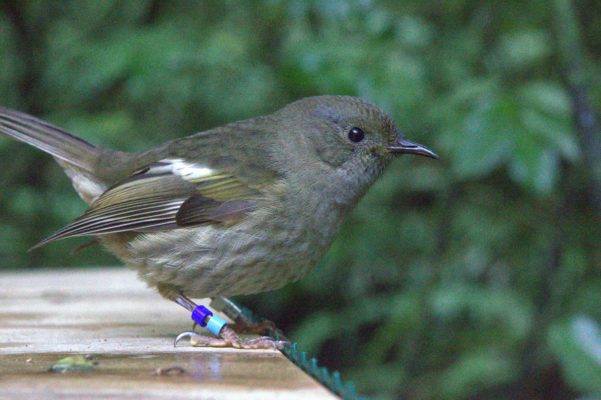
As the sanctuary project developed, the Trust became acutely aware of what the site potentially had to offer at a regional and national level.
“Our aspiration is to contribute to biodiversity and conservation and to play a part in species recovery.”
The 17 hectares of lake and wetlands at Rotokare is the largest within a fenced sanctuary. The variety of habitats within the reserve – forest, wetlands and lake – means it is suitable for a range of species.
“There have been 6 reintroductions so far – 5 birds and a plant: North Island (western) brown kiwi, North Island saddleback (tieke), whitehead (pōpokotea), North Island robin (toutouwai), stitchbird (hihi) and Dactylanthus taylorii, a fully parasitic plant commonly known as the ‘wood rose’.
The kiwi reintroduction project began in 2012 in partnership with the Taranaki Kiwi Trust.
“Working with others in collaboration is how we see the future,” says Simon. “We’ve established 33 kiwi that are genetically unrelated and that will increase to 40 by next year. The purpose is to support the repopulation of kiwi throughout Taranaki, translocating birds from the sanctuary. Our vision is to create a really solid breeding population that adds significant value to conservation.”
Saddleback have also been returned to Rotokare after approximately 150 years of regional extinction.
“The saddlebacks have come from two sites – Little Barrier/Hauturu-o-Toi and Bushy Park in Wanganui. We translocated males and females from both locations, 60 in total, with the aim of establishing as robust a population as possible. After 4 years you can’t count the saddlebacks. We stopped counting at 300-400!”
It’s hoped that the recently arrived stitchbirds will be equally successful.
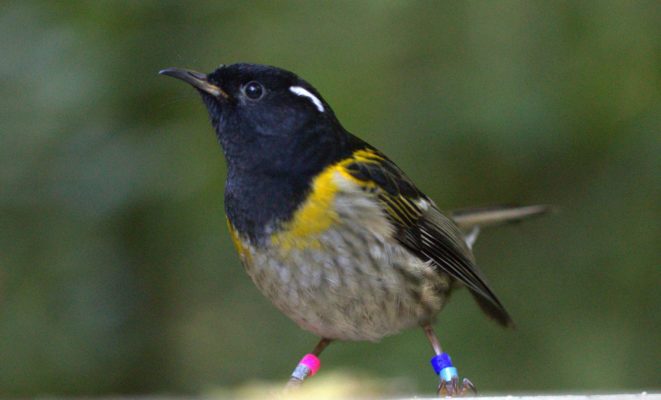
“The stitchbirds/hihi came from Tiritiri Matangi. They’re really threatened and need help. Rotokare has the 7th population on the planet and we’ve just concluded the first breeding season of hihi in Taranaki for about 130 years!”
Hihi need translocations and fenced sanctuaries to allow them to re-establish. Rotokare started with 40 males and females in total and expect about 17 young birds to fledge from the first breeding season.
“Many females didn’t survive their first winter here,” says Simon. “That’s not unusual for hihi. Not all individual birds adapt and survive in the longterm. We’ll top-up with a translocation in April to bolster the population. The ultimate goal is to have a self-sustaining population of hihi in Taranaki but we’re realistic about the risk. Hihi are not simple!”
The ‘resident locals’ have also benefitted from the transformation of Rotokare Scenic Reserve.
“Fernbirds are very sensitive and they’ve become abundant as a result of pest eradication,” says Simon. “Now I see a fernbird from my desk most days! Last year we carried out our first ever translocation from the sanctuary, sending fernbirds to Pauatahanui, a Forest & Bird wildlife reserve (in Porirua). It was a highlight – an absolute thrill – to support another community organisation!”
With both long-term resident birds and recent arrivals breeding and increasing in number, predator control in the area surrounding the fenced sanctuary is becoming increasingly important, both to ‘back up’ the security of the pest-proof fence and to help protect any young birds that fly the fence and explore the wider world.
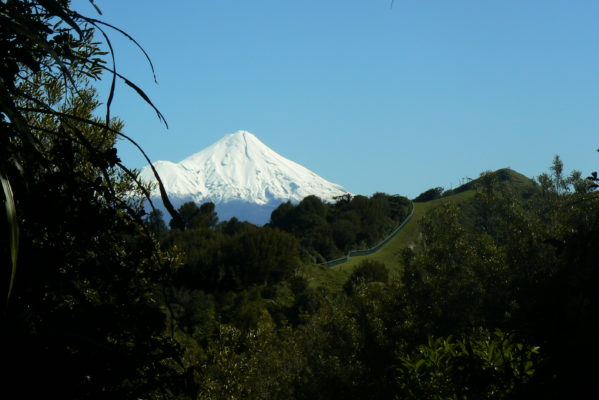
“One of our aspirations is to reintroduce pakete to Taranaki. That led to the instigation of the Rotokare Halo project,” Simon explains. “Pateke will be happy in the sanctuary but will also fly out to farmland ponds etc. The Halo is a collaboration with Taranaki Kiwi Trust, South Taranaki Forest & Bird, DOC and the Taranaki Regional Council and involves 4000 hectares surrounding the sanctuary, linking two other key biodiversity sites.”
The purpose of the Halo is threefold:
1. To protect the sanctuary from predator pressure. If a tree fell on the fence, lower predator density outside the fence lowers the incursion risk.
2. To protect spillover wildlife. “We want to be a fountain spewing wildlife into the surrounding environment,” says Simon. “It would be nice to have a natural dispersal rather than translocations.”
3. To be part of the regional effort for biodiversity restoration, linking high biodiversity areas with wildlife corridors.
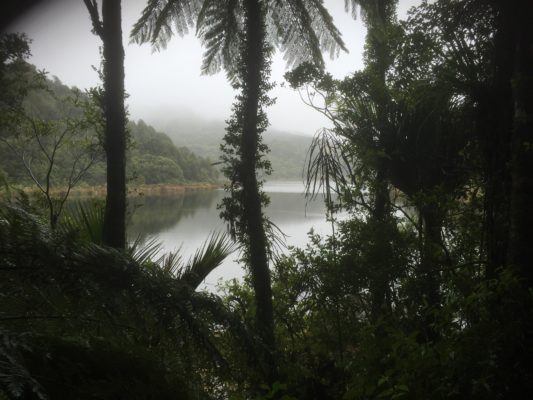
“The Halo is being done in full collaboration and partnership with the surrounding land-owners,” says Simon. “There are around 1200 traps on the ground with multi-species targeted. Land-owners have embraced the project and made it possible. They’re key partners.”
The landscape-scale Halo project is killing about 3000 pest animals per year and that number is growing.
“About 60% are rats,” says Simon. “Doing things on a landscape scale is critical and shared success leads to buy-in and ownership of the project by landowners.”
But the future of the Halo and the Sanctuary is always uncertain to some extent.
“A critical goal is how to make it sustainable,” says Simon. It’s difficult to be self-sufficient. We have to continue with good strategy, cost reduction and self-generated funding. In the last financial year 58% of our income was self-generated including sponsorship, donations and contract work. The ultimate goal is to have an endowment fund – we have started building this but have a very long way to go yet.”
Innovation also contributes.
“We sell our own honey. A local producer does some honey from the Sanctuary each year and donates it to us.”
Rotokare also has an Education Programme, developed in 2009.
“It’s delivered to 13,000 students and is fully curriculum-linked, catering for students from early childhood to NCEA-level units. We have a Ministry of Education contract as a LEOTC (Learning Experiences Outside the Classroom) provider. It offers education for, about and in the environment.”
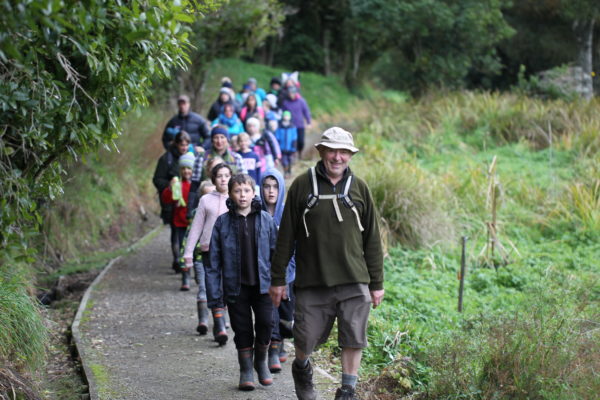
Other programmes include an ‘ambassador programme’ for year 6 and 7 pupils (a small group which not only extend their conservation knowledge, but also gain public speaking and leadership skills), adult education initiatives and ‘night tours’ to experience the ‘creepy-crawlies’ of the forest.
“The night tours are a great advocacy opportunity to show Rotokare is not just birds and trees. People learn about all the relationships the ecosystem contains.”
The ‘Annual Field Trip’ has also been an important part of the Rotokare year since about 2010 (and informally before that).
“It’s usually held in winter and is a ‘thank you’ to our staff, trustees and volunteers. We get everyone in our ‘family’ together and visit other projects. Community wellbeing is an important aspect of what the Sanctuary is about and we’ve covered most of the North Island over many years.”
Simon sees the annual field trip as having many benefits.
“It’s really important for Rotokare to invest in looking outside itself, to learn from others and evaluate our own performance. It also helps inform our business and strategic planning. Children contribute to our annual planning too. We also relish the opportunity to share our story with other groups who visit us.”
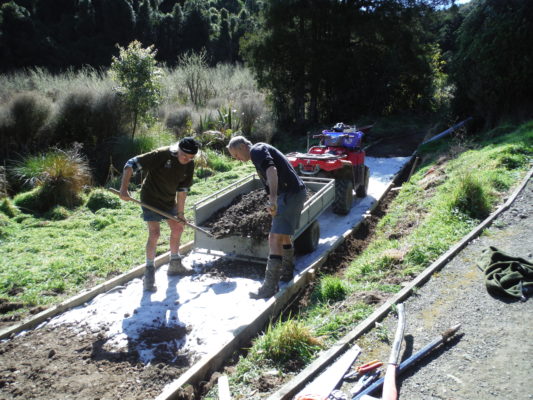
At Rotokare, volunteers and staff are seamlessly integrated. Together they are simply ‘the workforce’.
“Over 12 months, volunteers contribute 9000 hours. As a low population, rural community of around 25,000 people we don’t have an abundance of volunteers. Several volunteers effectively work here full-time. They bring skills and grass-roots commitment and are a mix of retired, self-employed, shift workers and kids/families.”
Rotokare Sanctuary prides itself on being open and inclusive.
“There’s 24/7 free access for the community. That’s what personally appeals to me. It’s open to everyone. It’s a beautiful site – it’s well cared for and visitor numbers are increasing every year.”

